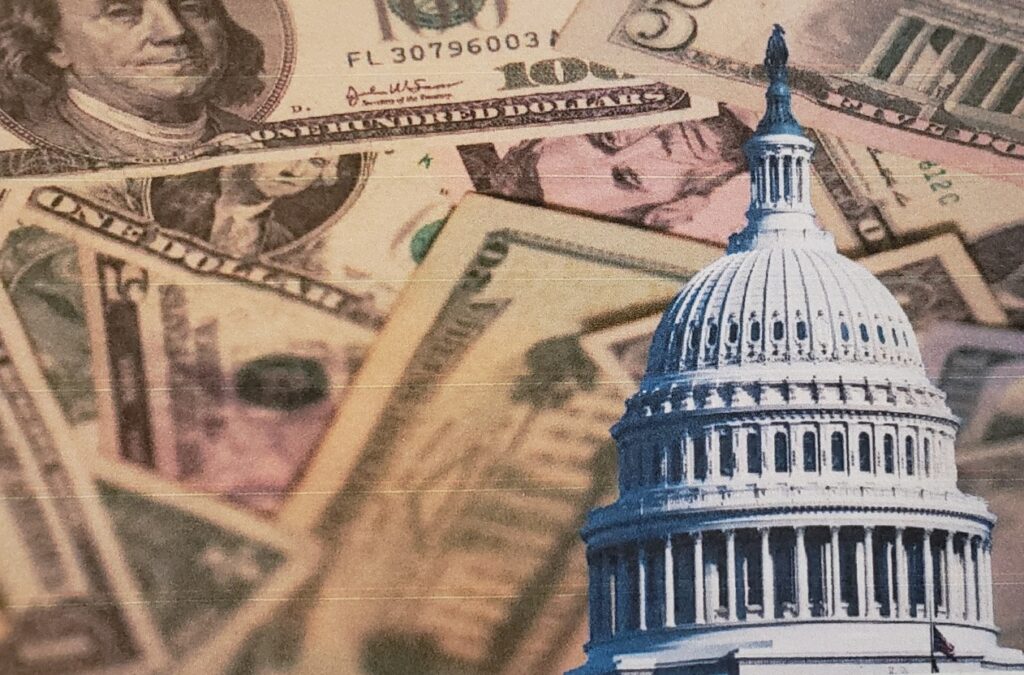
Almost two months ago, we reached the ceiling on the national debt. On its natural course, the debt would have blasted through the $31.38 trillion ceiling. So, the Treasury Department began implementing “extraordinary measures” to avoid breaching the limit. Treasury estimated that it could keep the debt under the cap for roughly five months.
Congressional Republicans say there must be a plan to cut the massive deficit spending which has fueled the recent rapid escalation of national debt.
The so-called responsible faction in the debt ceiling debate says that the ceiling should be raised without any preconditions — without any risk of default.
This faction has given comfort to the White House, which has engaged in massive spending over the last two years. The Biden administration has refused publicly to negotiate with Republicans about spending cuts.
Thus, there is a standoff, at least in public posturing. Of course, negotiations are underway.
However, there’s a group of about 20 House Republicans—who originally opposed Kevin McCarthy’s speakership—who have announced their adamant opposition to raising the ceiling without meaningful spending cuts. On Bloomberg TV in mid-January, Representative Andy Ogles of Tennessee said he was “unwilling to give Biden a blank check.”
Related: House Freedom Caucus Wants 10-Year Spending Limit for Debt Vote
In turn, the responsible faction has reared up in indignation and labelled this small faction irresponsible and worse.
But who’s really irresponsible? This small group or the Biden administration and congressional Democrats, who have been borrowing and spending massive amounts for two years. Since President Biden’s inauguration, the national debt has soared by over $3.6 trillion.
Was this spending responsible after $4.4 trillion that had already been borrowed and spent between February 2020 and January 2021 as part of a necessary and sufficient response to the pandemic and the ensuing economic shutdown? Many economists warned that Mr. Biden’s $1.9 trillion American Rescue Plan in early 2020 was unnecessary and would unleash inflation—as it clearly has. And Biden has perpetuated inflation with last December’s $1.7 trillion Omnibus.
Yet the Biden administration’s irresponsibility in its domestic spending is not the primary reason it should be reversed. The determinative reason is that federal interest expense is rising rapidly toward unaffordable levels, given the $8 trillion increase in debt since February 2020 and the high interest rates that the Federal Reserve has been imposing to rein in inflation.
In the first four months of this fiscal year, gross interest on the national debt hit $261 billion—or $194 in net interest, excluding interest on Treasury securities held in government trust accounts. That’s $783 billion gross and $582 billion net on an annualized basis, up dramatically from $580 billion gross and $383 billion net in the 12 months before the economic shutdown in March 2020. This escalation does not even reflect the full-year impact of the Fed’s interest-rate increases. The federal funds rate in early March a year ago was near zero percent.
Rising interest expenses are reflected in the deficit. While the deficit has fallen from the pandemic-era deficits of $3.1 trillion in fiscal 2020 and $2.8 trillion in fiscal 2021 to $1.4 trillion last fiscal year, the downward trend has ended. In the first four months of this fiscal year, the deficit was $460 billion—or another $1.4 trillion on an annualized basis.
Rising interest expense is a major contributor to the deficit and the growing national debt. It’s a self-perpetuating cycle: Uncle Sam borrows to pay interest, incurs more interest expense on the new borrowing, and must borrow even more in the next go-round.
Washington has long been aware of the impending budget crisis and could have done something. Now, the massive increase in debt since the outbreak of COVID-19 has made the matter urgent. The small group of Republicans threatening to vote against a debt-ceiling increase without meaningful spending cuts has the right idea—that is, to force action now. The longer we wait to rein in debt, the harder it will be to escape a looming fiscal tailspin.
The House GOP should unite around these legislators and adopt a simple dollar-for-dollar approach, offering Democrats one dollar of additional debt capacity for every dollar of domestic spending cuts today—not 10 years from now—leaving Democrats to designate what nonmilitary programs to cut. If people wonder why defense should be exempt, they need only consider Ukraine today and the possibility of Taiwan tomorrow.
Almost two months have elapsed of the five during which Treasury says it can buy time with “extraordinary measures.” Democrats should recognize that, by opposing spending cuts, the credit crisis will be on their hands, whether in terms of risk of default in the short term or of an inevitable reckoning as mounting interest on the national debt starves the federal budget much sooner than expected.
This original version of this column appeared in The Wall Street Journal.
![]()
Red Jahncke is a nationally recognized columnist, who writes about politics and policy. His columns appear in numerous national publications, such as The Wall Street Journal, Bloomberg, USA Today, The Hill, Issues & Insights and National Review as well as many Connecticut newspapers.






